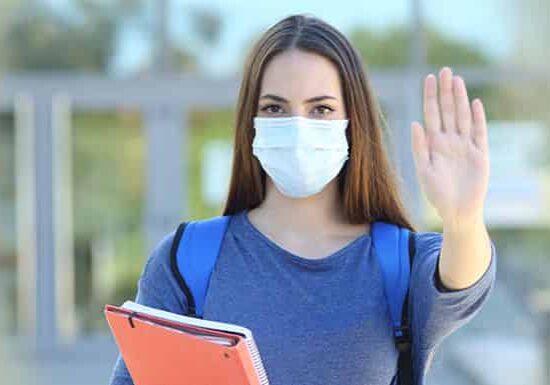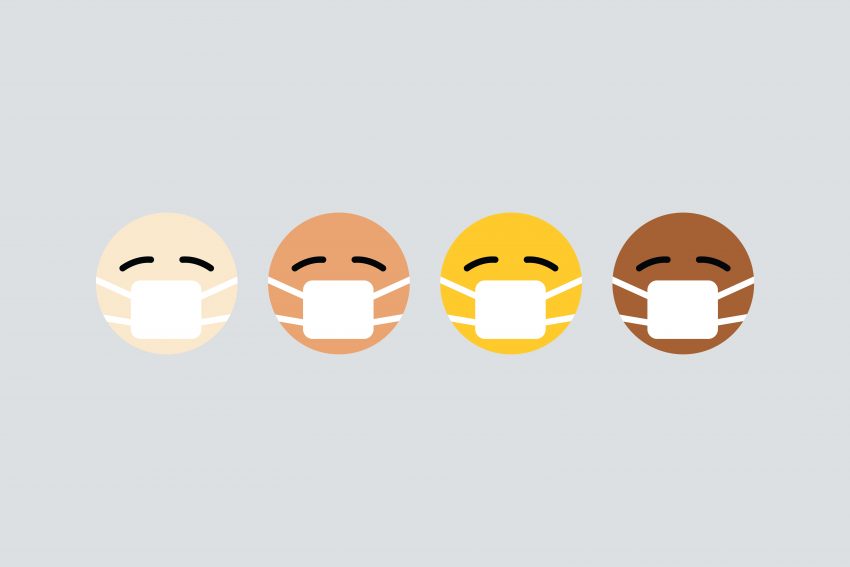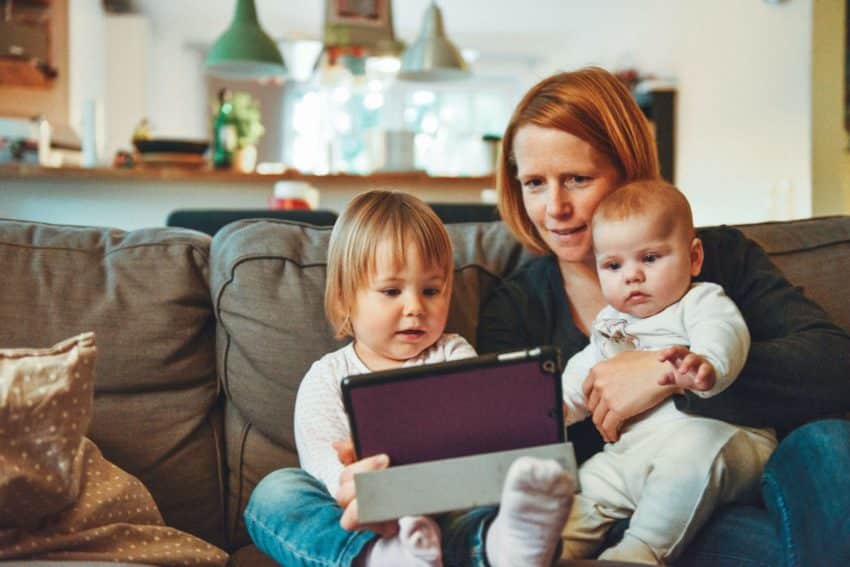What is the Impact of Coronavirus on Education
Updated: June 19, 2024
Published: March 22, 2020

Many countries are suggesting various levels of containment in order to prevent the spread of coronavirus, or COVID-19. With these worries, schools and universities are closing down and moving abruptly to online platforms and remote education. This sudden change has us asking, “What is the impact of coronavirus on education?”
Let’s discuss the nature of COVID-19, how schools are adjusting to remote learning, and how those adjustments are impacting education across the board.
Quick Navigation Links:
- Overview of COVID-19
- Why Are People So Worried?
- Why Schools Are Closing
- What Are The Alternatives When Schools Close
- How Education Is Being Impacted So Far
- New Opportunities
- The Bottom Line
Overview Of COVID-19
Coronaviruses are a family of viruses that range from the common cold to Severe Acute Respiratory Syndrome (SARS). The most recent coronavirus (sometimes referred to as the novel coronavirus) is called COVID-19, and was first detected in Wuhan, China in December of 2019.
Since its first cases in China, COVID-19 has spread to almost every country worldwide. According to the World Health Organization, 167,515 global cases were reported, including 6,606 deaths, as of March 16, 2020.
Why Are People So Worried?
Though the world has dealt with other pandemics in the past, COVID-19 has been spreading fast. Additionally, the virus is quite contagious and can pass between people before any symptoms appear.
The worry around the virus, and the effort to contain it, stems from a lack of previous experience with it. Since the virus is previously unknown, highly contagious, and passes easily from one person to the next, public health and government officials around the world are working hard to contain the spread of the virus while a vaccine is still unavailable.

Photo by visuals on Unsplash
Why Schools Are Closing
As part of the effort to contain the spread of the coronavirus, public spaces such as schools, universities, and offices are closing down so that people can stay at home and prevent further spread.
In countries, such as China, where testing and quarantine measures were taken, the spread was able to level out. Measures that are taken to slow the rate of infection include social distancing, limits on event sizes, and home quarantine when necessary.
Closing schools and offices ensures that people can limit their interactions with others and slows the spread of the virus while the healthcare system copes with the pandemic.

Photo by Kelly Sikkema on Unsplash
What Are The Alternatives When Schools Close
1. Online learning
Many schools and universities are opting to continue their normal classes on online platforms. This includes the use of online tools, such as group video programs, that allow teachers and students to meet and conduct classes over the internet.
Another way that students are continuing their studies is through distance education, which uses online programs that replace instructors with educational material that students study on their own.
An example of distance learning would be online classes or videos which students use on their own time, as opposed to meeting live with the teacher and other students.
However, not all schools and universities were able to make it online and may soon be closed forever. Institutions like University of the People – an online, tuition-free, US accredited university – have always been online. Because of that, students can learn with us anywhere, anytime. We don’t have a physical campus, so our doors are always open! Nas Daily, an impactful social media influencer, talks about this, how students are demanding more value and lowers costs for their collegiate studies, and other higher education news in his video below.
2. Free online programs
In light of the pandemic, and the interruption of normal education, many online educational platforms have been advertising free educational tools for students around the world who are stuck at home.
Companies such as Scholastic and Coursera are advertising free online courses to encourage students to continue learning at home, and websites such as Unesco and Openculture are creating lists of free online courses and resources for anyone who wishes to learn at home.
3. Parental care
With young children at home from school and their normal schedules disrupted, parents are needing to make schedules for children who would normally be in school. Even with online classes, parents need to help younger children navigate school on the computer, and parents with kindergarten children are unable to work unless other arrangements can be made.
How Education Is Being Impacted So Far
1. Delays
Standardized testing and school admissions are being delayed across the country. Some states have opted to cancel or delay standardized testing, while others are thinking of extending the school year due to delays and many missed days of school.
Classes and semesters are being delayed as staff and teachers acclimate to the new online platforms and try to switch their material to a new teaching style. This includes learning how to use online tools, figuring out how to convert hands-on learning materials or discussion-based classes to the new platforms, and possibly changing the whole learning plan based on the inability to switch it over to an online platform.
2. Challenges for staff and students
As school and university staff learn how to convert their lessons to online platforms, both students and staff are learning how to deal with remote learning and communication.
Though technology has already had a big hand in most school affairs, the new dependence on technology for every aspect of education is forced to occur overnight — leaving many people struggling with technological difficulties, as well as coping with the challenges of studying at home and learning how to construct a productive schedule outside of the school environment.

Photo by Helloquence on Unsplash
3. Challenges for low-income families
Unfortunately, many families rely on the public school system, not only for education, but for necessities like food and childcare. With schools cancelled, many children are left without proper meals, and parents are forced to take off work in order to care for their young children.
Although many schools are continuing online, many students do not have access to computers or the internet in their homes. Without the proper technology, many students will be forced to miss out on their education until further solutions can be arranged.
4. Concentration difficulties
Younger children, as well as students with ADHD or other special needs, find it difficult to concentrate to full capacity with online educational tools. Young children need the assistance of in-person instruction, and may find it difficult to concentrate in a typical frontal class conducted on a computer. Students with special needs, who also rely on in-person instruction, may find it especially difficult to switch to online platforms.
These difficulties may require a more unique approach to online learning, or may demand the extra assistance of parents as these students navigate a new educational paradigm.

Photo by Alexander Dummer on Unsplash
New Opportunities
1. More online resources
Despite the above challenges, the shift in education also means that more opportunities are arising and becoming available to students. An emphasis is being put on online and distance education — making affordable programs more relevant and known to the public.
2. New learning opportunity
Students who are currently making the switch from frontal classes to online classes may find that a remote education actually works well for them, and may choose to take further education or degrees online.
This switch is an opportunity for many students to try out remote education, and may make it more likely that they will engage with online classes in the future. Students being newly introduced to remote education may opt for taking a future degree online, due to the benefits of distance learning and the affordable options available.
Online universities, such as University of the People, offer degrees that are 100% online — making it possible for students to earn a degree from anywhere in the world and with varying schedules due to work or family obligations. University of the People is also tuition-free, making education available to students worldwide, no matter their economic status.
The Bottom Line
With efforts to prevent the spread of the novel coronavirus, education is suddenly and rapidly moving online. New educational opportunities are being advertised and made available for students, but the switch has also pointed to the importance of the public school systems for lower-income families, and the challenges the switch presents for families, special needs students, as well as staff and students across the board.
It may be too early to say how students and teachers will cope with online learning as they figure out the kinks, but the impact of the coronavirus on education is an important consideration.
What’s been seen so far is that remote learning comes with many challenges, but the switch to technological platforms also gives new opportunities to students and teachers to try out different modes of education.
It’s possible that once the COVID-19 pandemic settles down, we may see a continued increase in education systems using online platforms for study aids, as well as students embracing online education for their higher learning degree programs.
